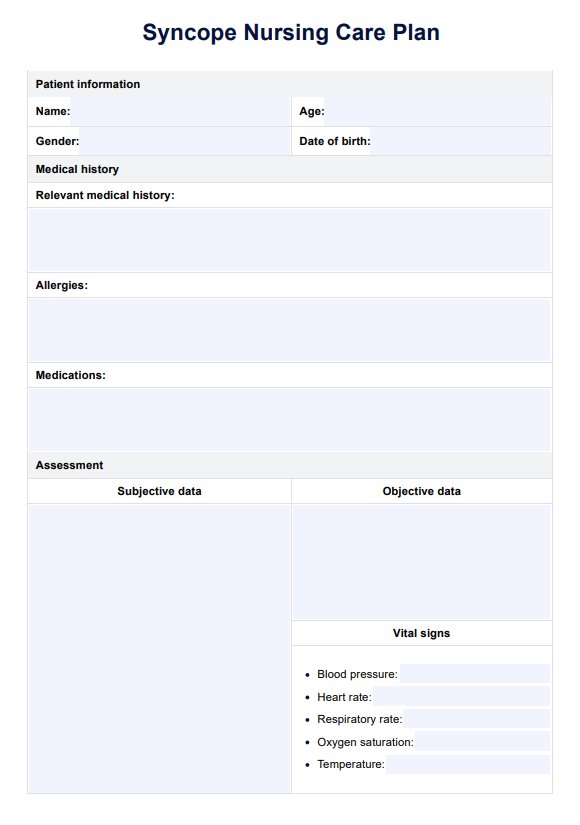Syncope can result from various mechanisms affecting blood flow to the brain. Key causes include vasovagal syncope, often triggered by emotional stress or pain, and orthostatic hypotension, where a significant drop in blood pressure occurs upon standing. Understanding these mechanisms is crucial for accurate diagnosis and management.

Syncope Nursing Care Plan Template
Discover the underlying causes of syncope and utilize this nursing care plan to help design valuable treatment and intervention plans for your patients today!
Syncope Nursing Care Plan Template Template
Commonly asked questions
Preventive measures involve identifying triggers and educating patients on lifestyle modifications. Emphasizing hydration, encouraging gradual position changes, and teaching patients to recognize early signs of impending syncope can help maintain adequate blood flow to the brain and minimize episodes.
Further evaluation is warranted if syncope episodes are recurrent, occur in conjunction with alarming symptoms (such as chest pain or confusion), or follow a significant head injury. These cases may indicate underlying conditions requiring comprehensive assessment and management.
EHR and practice management software
Get started for free
*No credit card required
Free
$0/usd
Unlimited clients
Telehealth
1GB of storage
Client portal text
Automated billing and online payments











